Table of Contents
Engine Misfire When Cold: Case Study on Mercedes-Benz E Class W212 with M271 engine
An engine misfire when cold is a common issue that many Mercedes-Benz owners face. It can cause rough idling, long cranking times, unusual engine noises, and an illuminated check engine light. In vehicles like the Mercedes-Benz E Class W212 equipped with the M271 engine, cold misfires can be a sign of deeper timing-related issues.
This case study explores how a Mercedes E Class W212 with the M271 engine was diagnosed and repaired after repeated misfires during cold starts. By following a structured diagnostic process, technicians were able to identify worn camshaft sprockets as the root cause and restore the vehicle’s performance.
Vehicle Details
- Model: Mercedes-Benz E Class W212
- Engine: M271 Inline-4
- Customer Complaint: Engine misfire when cold, long cranking, rough idle, unusual noises, and check engine light
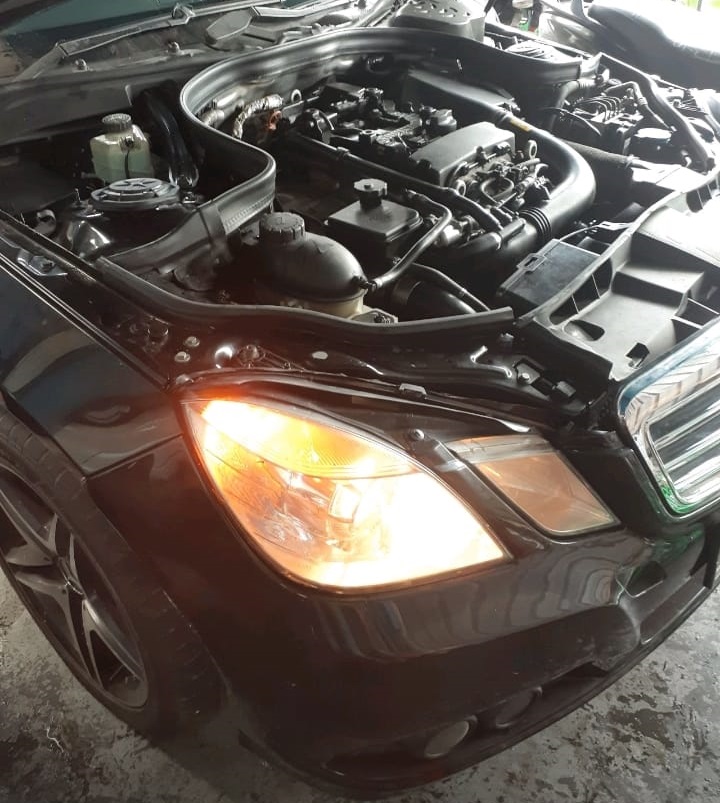
Customer Complaint
The vehicle was brought to the workshop with these issues:
- – Long cranking during cold starts
- – Rough idle immediately after starting
- – Strange mechanical noises from the engine bay
- – Check engine light illuminated
Since these symptoms primarily occurred during cold starts, the diagnosis focused on engine timing and combustion irregularities.
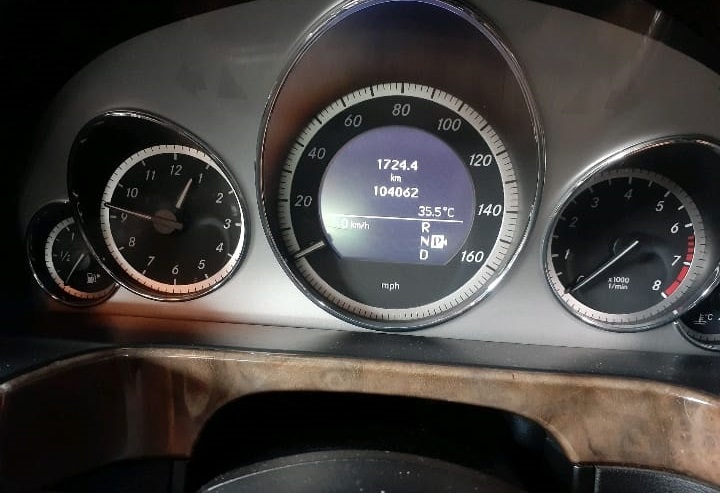
Diagnostic Process
Step 1: Fault Code Scan
Using the Mercedes-Benz Xentry diagnostic tool, the following fault codes were retrieved:
- – P001477: The position of the exhaust camshaft (cylinder bank 1) deviates from the specified value; the commanded position cannot be reached.
- – P001177: The position of the intake camshaft (cylinder bank 1) deviates from the specified value; the commanded position cannot be reached.
- – C003100: The left front wheel speed sensor has a malfunction.
- – C003164: The left front wheel speed sensor has a malfunction; there is an implausible signal.
While the wheel sensor codes were unrelated to the misfire, the camshaft position faults (P001477, P001177) directly pointed toward a timing issue affecting combustion.
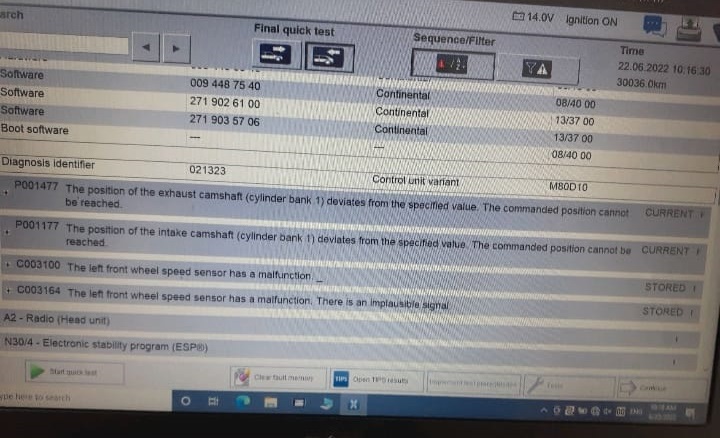
Step 2: Root Cause Analysis
The intake and exhaust camshaft positions were not aligning with the expected values. This misalignment disrupts valve timing, leading to incomplete combustion and misfires—especially during cold starts when the system relies heavily on precise timing.
A visual inspection was carried out:
- – The engine tappet cover was removed.
- – Timing marks on the camshaft sprockets were checked.
- – Findings: Worn sprockets with weakened tension, and timing marks confirmed misalignment.
This confirmed that the camshaft adjuster sprockets were the cause of the misfire.
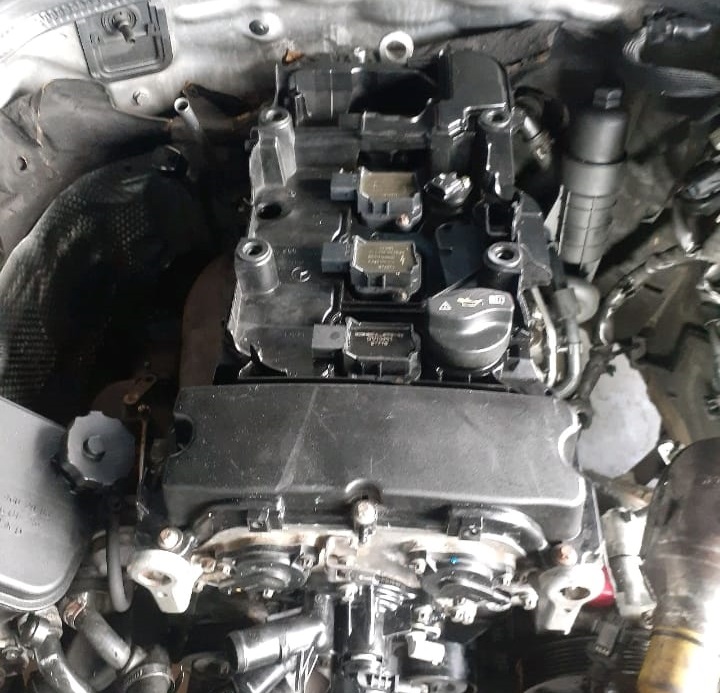
Resolution
The repair process included:
1. Replacing the Engine Camshaft Adjuster Timing Sprocket Actuator Gears
- – New sprockets were installed.
- – Timing marks were carefully aligned to manufacturer specifications.
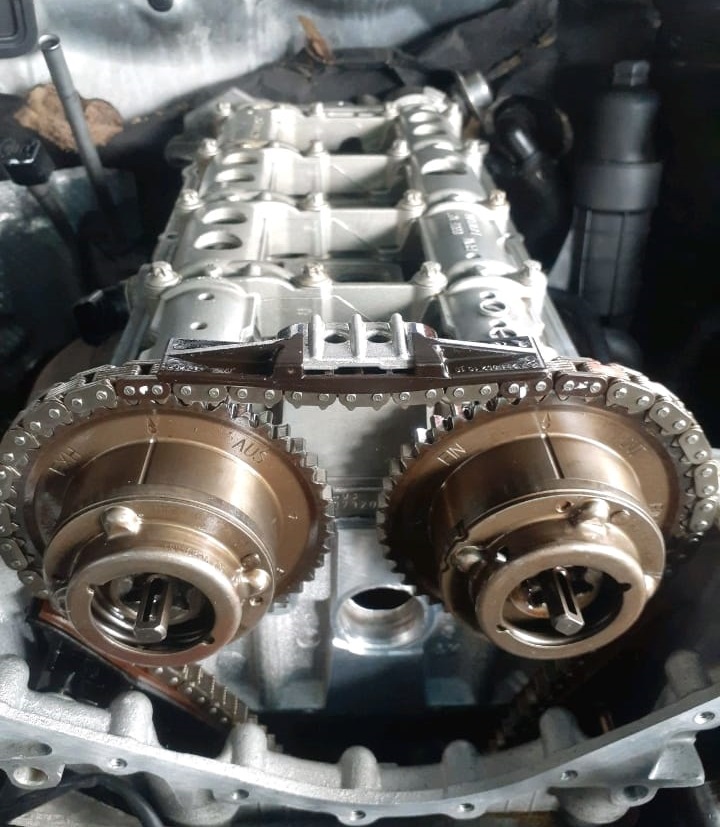
2. Reassembling and Clearing Fault Codes
- – Engine reassembled with new parts.
- – Diagnostic system reset and codes cleared.
3. Testing
- – Engine started with no long cranking.
- – Idle stabilized with no unusual noises.
- – Check engine light did not return.
- – Test drive confirmed smooth performance.
Result: The engine misfire when cold was fully resolved.
Explore More Mercedes Engine Misfire Issues
For a deeper dive into all misfire-related problems, visit our hub page: Mercedes Engine Misfire Issues – Causes and Fixes. You’ll find grouped case studies, step-by-step diagnostics, symptom–cause–fix tables, and prevention tips to help you resolve misfire problems quickly and effectively.
Symptom – Cause – Fix Table
| Symptom | Likely Cause | Fix |
|---|---|---|
| Long cranking on cold start | Camshaft timing deviation | Inspect sprockets, replace worn camshaft adjuster gears |
| Rough idle during cold starts | Worn or misaligned camshaft sprockets | Replace sprockets and reset timing |
| Strange noises from engine bay | Weak sprocket tension or worn timing components | Replace camshaft adjuster gears |
| Check engine light + camshaft codes (P001177, P001477) | Camshaft actuator malfunction | Replace affected timing components |
| Misfire at idle that improves when warm | Timing chain/sprocket wear | Inspect and replace worn timing parts |
Key Takeaways
- 1. Cold misfires often point to timing issues: especially when accompanied by camshaft-related fault codes.
- 2. Diagnostic tools like Xentry are essential: they help narrow down faults quickly.
- 3. Visual inspection confirms electronic data: timing marks and sprocket condition verified the root cause.
- 4. Replacing worn timing components restores performance: not only was the misfire resolved, but long-term reliability was improved.
- 5. Ignoring misfires can cause severe damage: prolonged timing misalignment risks damaging pistons, valves, or catalytic converters.
Preventive Maintenance Tips
For Mercedes-Benz E Class W212 with the M271 engine:
- – Replace spark plugs and ignition coils as per service schedule (every ~60,000 km).
- – Inspect camshaft sprockets and timing chain during major services or when codes indicate timing deviation.
- – Listen for unusual noises during cold starts; rattling may indicate worn sprockets or chain.
- – Act quickly on check engine lights related to camshaft position sensors.
- – Use quality engine oil to reduce wear on timing components.
FAQs on Engine Misfire When Cold
Q1: Why does my Mercedes misfire only when cold?
Cold misfires are often linked to timing deviations, worn camshaft sprockets, or poor ignition when the engine first starts.
Q2: Can I drive with a camshaft timing misalignment?
It’s risky. Prolonged driving can damage valves, pistons, or the catalytic converter.
Q3: How much does it cost to replace camshaft sprockets on a Mercedes E Class?
Costs vary by region, but typically €1,000–€1,800 including parts and labor.
Q4: What other issues can mimic a cold misfire?
Faulty ignition coils, spark plugs, or fuel injectors can also cause cold misfires, but timing-related fault codes usually point to sprocket wear.
Q5: How can I prevent misfires in the M271 engine?
Follow the service schedule, use OEM parts, and inspect timing components during routine maintenance.
Conclusion
This case study of a Mercedes-Benz E Class W212 with the M271 engine highlights how systematic diagnosis can solve engine misfire when cold issues.
By using Xentry diagnostics, reviewing fault codes, and performing a visual inspection of timing components, the root cause a worn camshaft sprocket was identified and resolved.
After replacing the sprockets and realigning timing, the misfire disappeared, the engine light turned off, and the vehicle’s performance returned to normal.
For Mercedes owners, the key lesson is: don’t ignore cold-start misfires. Early diagnosis can prevent costly engine damage and ensure your vehicle remains reliable for years to come.
Author
Written by: Mercedes Expert
Automotive Technical Trainer & Mercedes-Benz Diagnostic Specialist
With years of hands-on experience repairing and diagnosing Mercedes-Benz vehicles, specializes in case-study-based troubleshooting guides that blend workshop accuracy with educational clarity.
Last Updated: September 2025

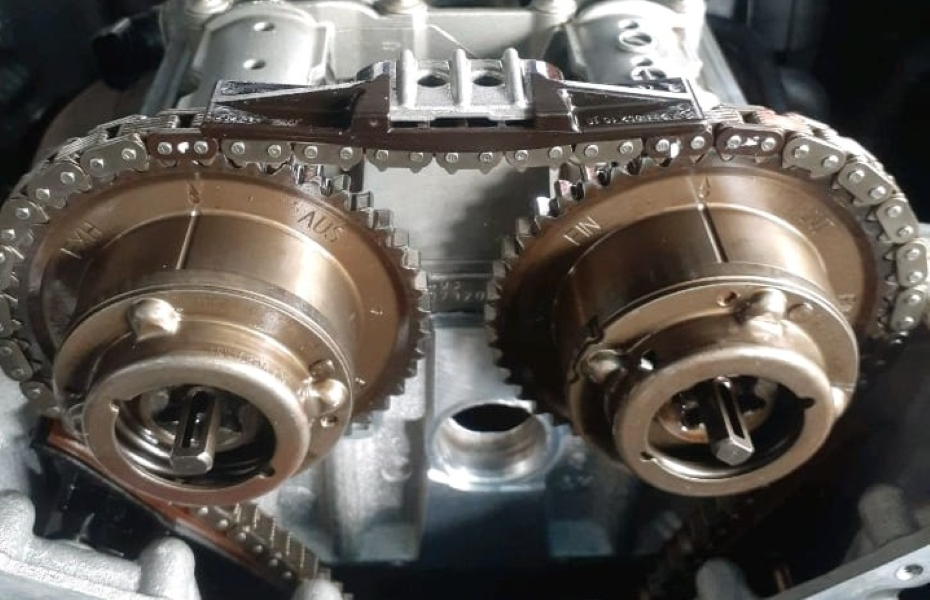
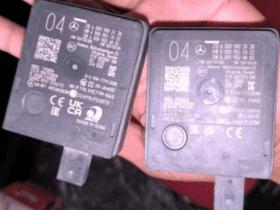
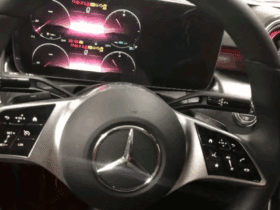
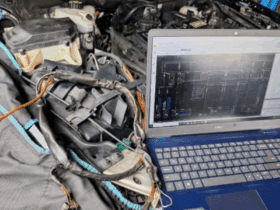
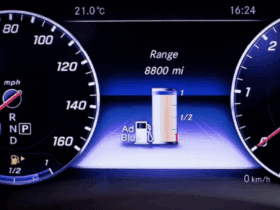
Leave a Reply